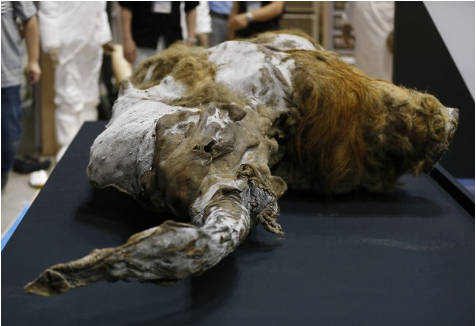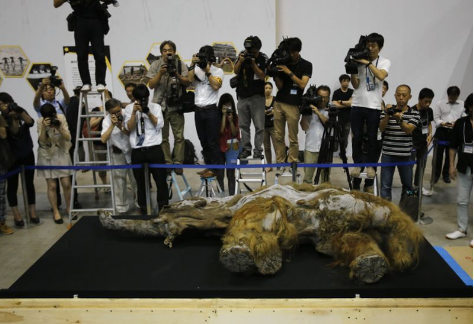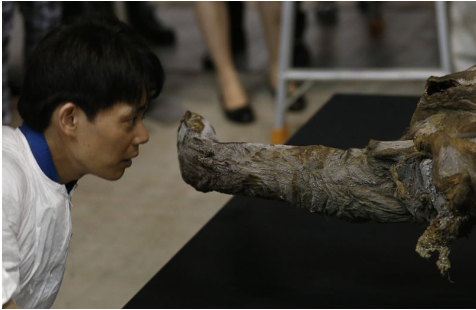On the islands of the New Siberian, Yuka was discovered encased in ice. The young mammoth is believed to be the best-preserved specimen of its kind that has ever been discovered by scientists, despite having portions of her body exposed to the elements and predators.
She has been transported with care to an exhibition space in Yokohama, which is south of Tokyo, in a sizable container filled with dry ice.

Strolling past the creature, visitors can observe its delicate tissue and tufted hair of orange-brown color, and envision it walking the frozen plains thousands of years ago.
According to the Siberian Times, Yuka was first thought to be 10,000 years old, but further testing revealed the two-year-old mammoth was actually considerably older—roughly 39,000 years.

For the first time, scientists have been able to draw blood from the extinct creature for testing purposes.
Scientists from South Korea and Russia are reportedly trying to harvest the mammoth’s DNA in order to revive the species, according to a Times story from May.
Yuka is on exhibit at the Japanese museum, her legs spread wide and her trunk fully extended.

And a layer of permafrost covers her.
A little population of woolly mammoths survived on Wrangel Island in the Arctic until about 1700 B.C., while the majority of woolly mammoths went extinct about 10,000 years ago.
Yuka enables scientists to “dig deeper into the reasons why species became extinct and apply the lessons learned to the human race, which might be facing its own dangers of extinction,” according to mammoth researcher Norihisa Inuzuka.

